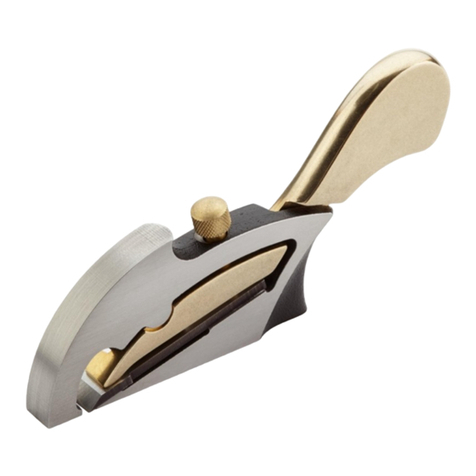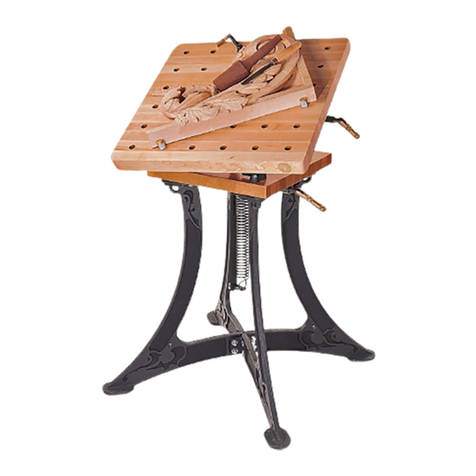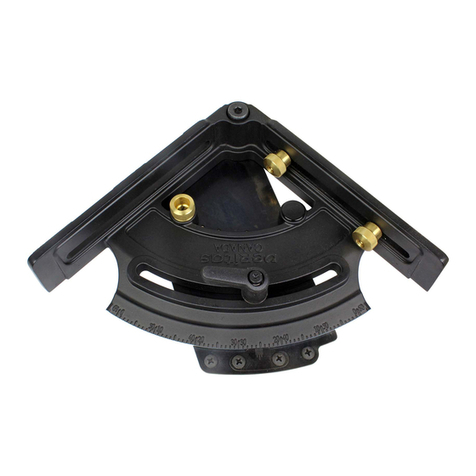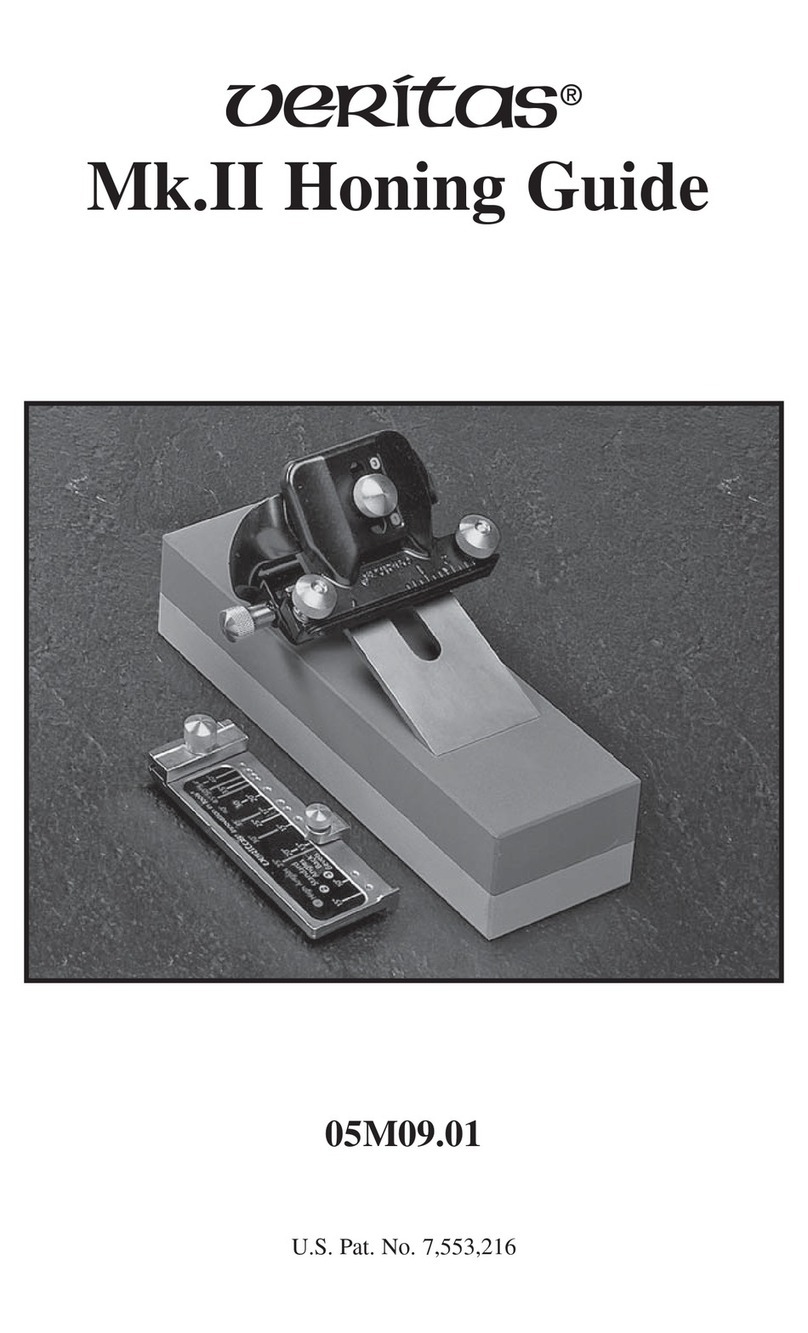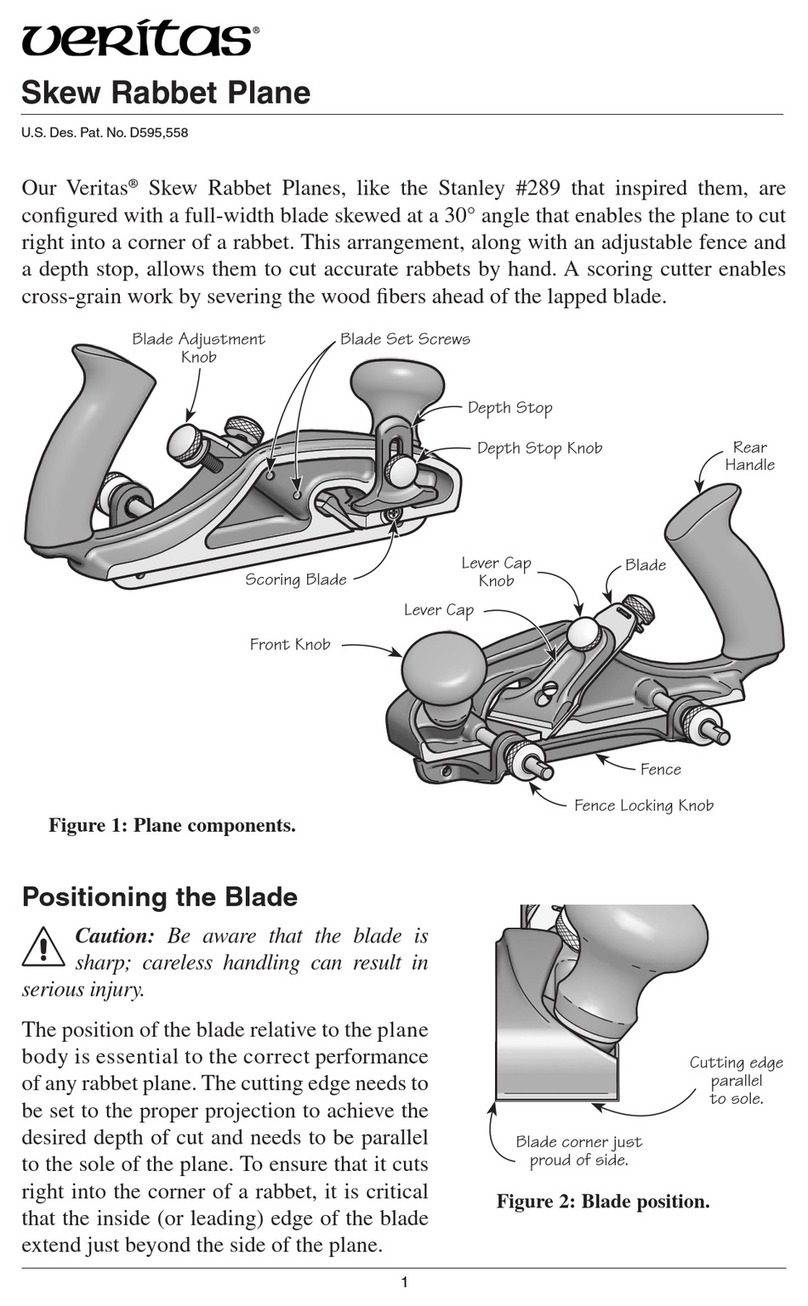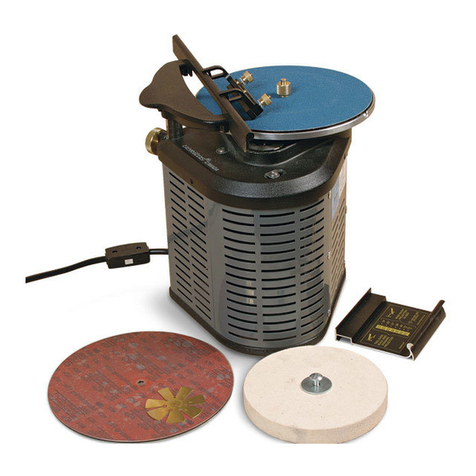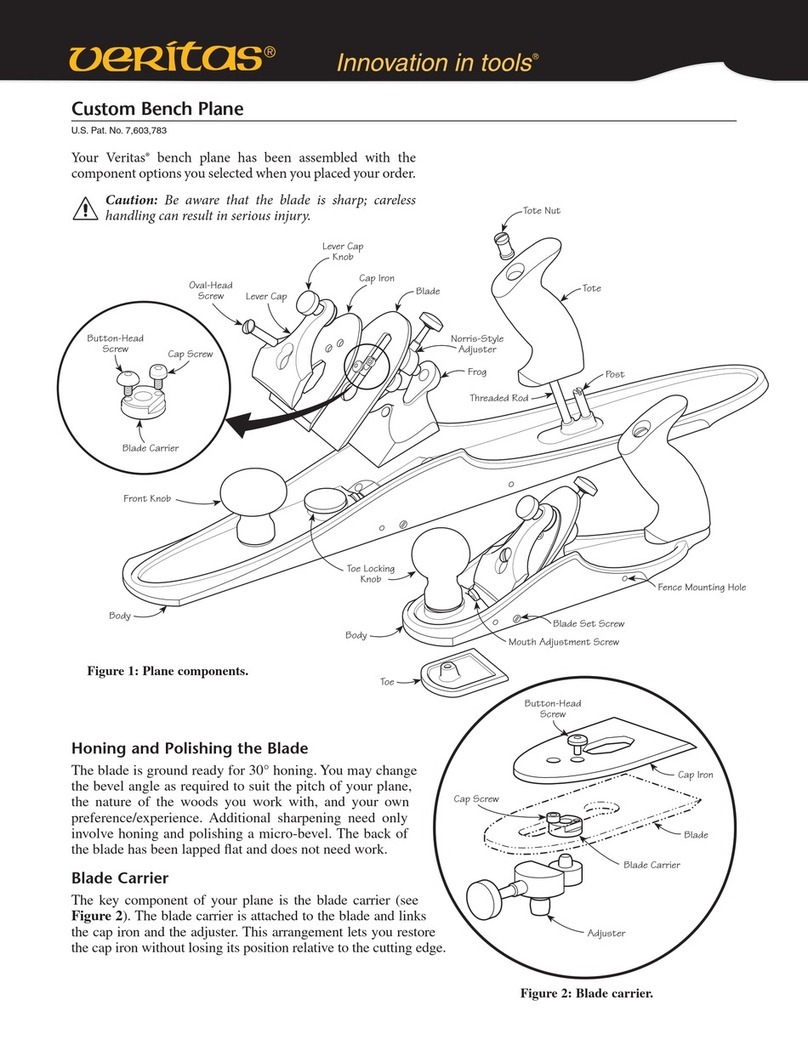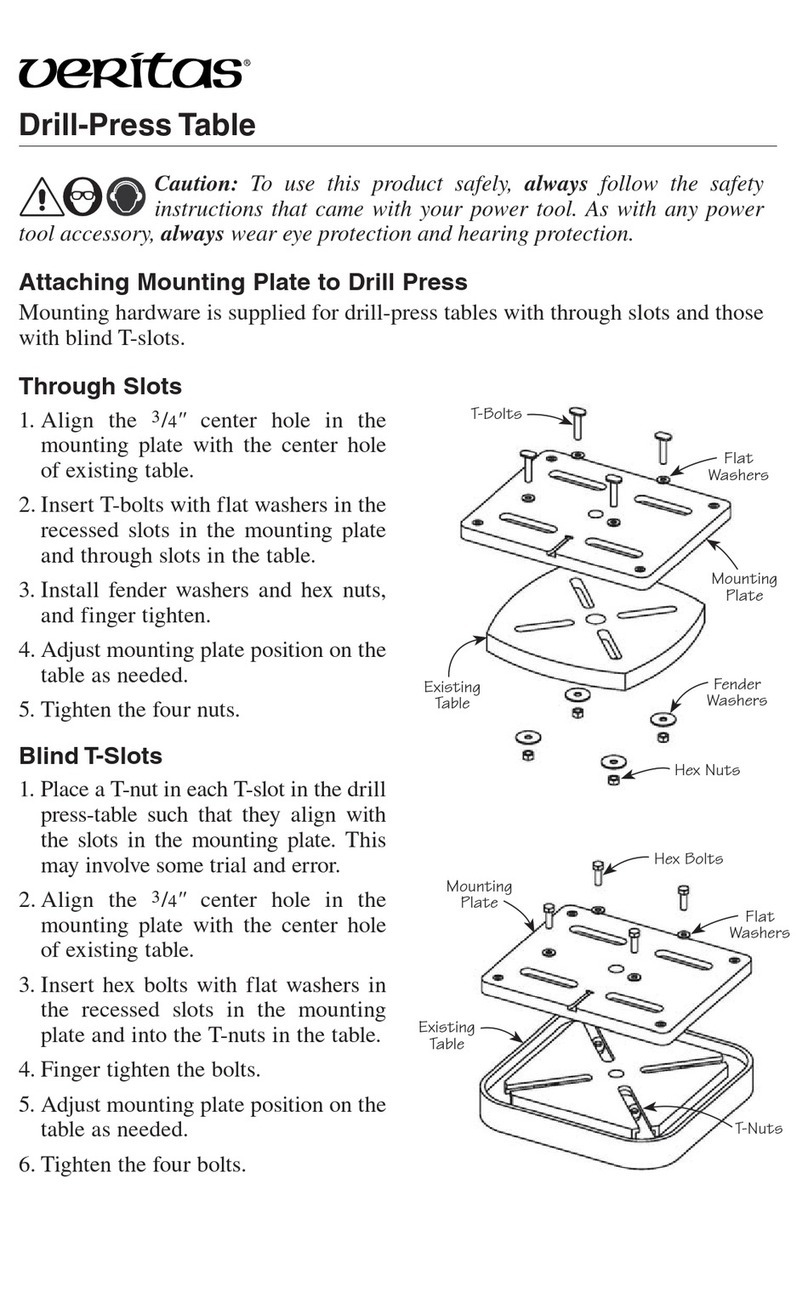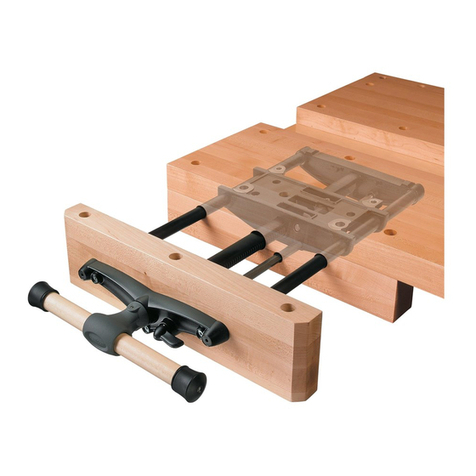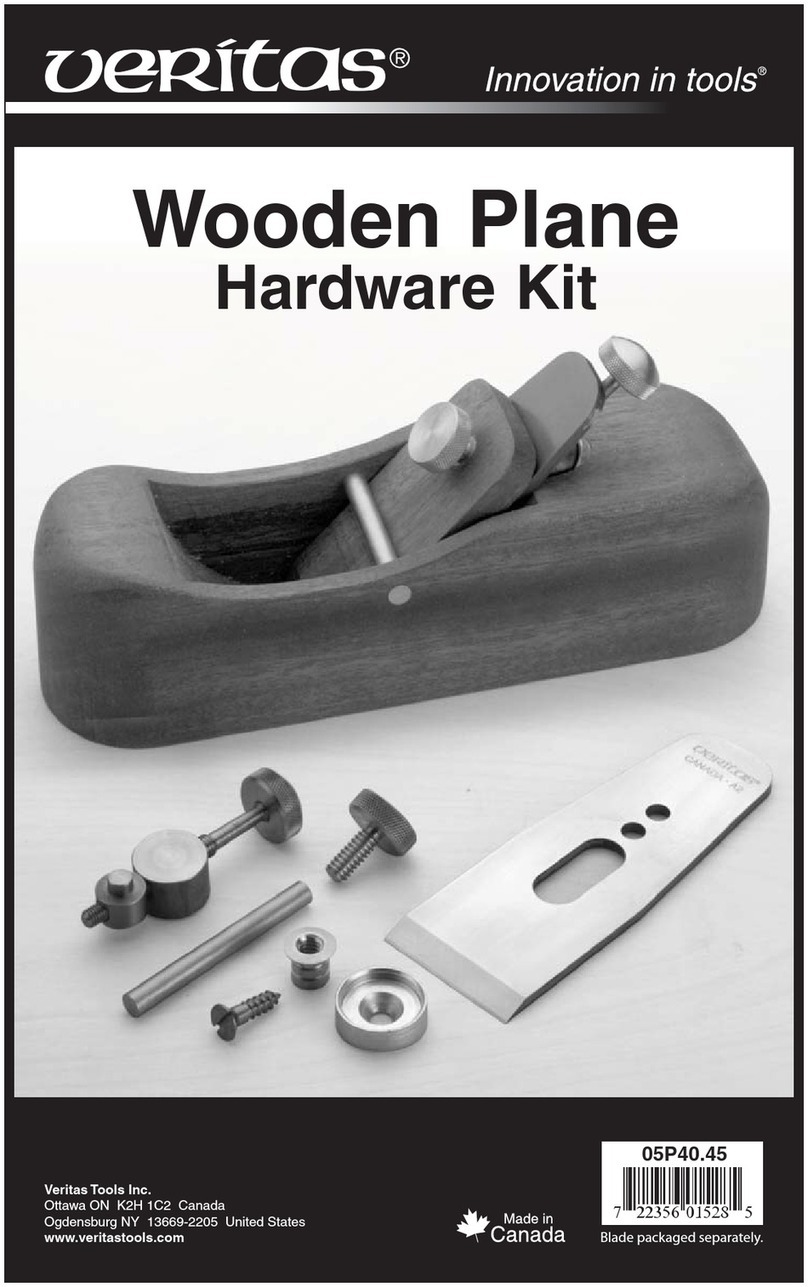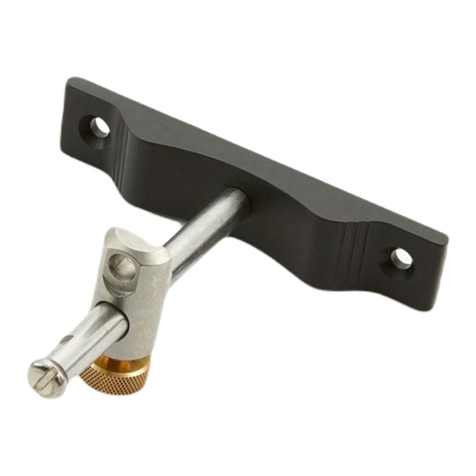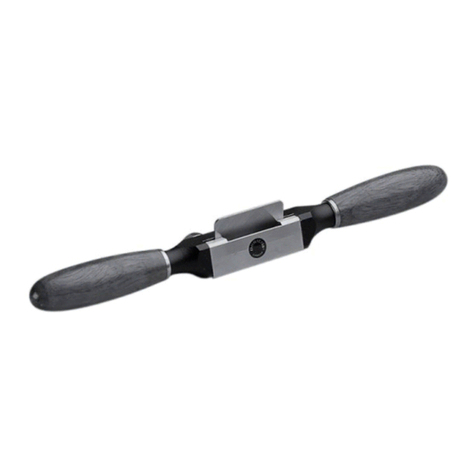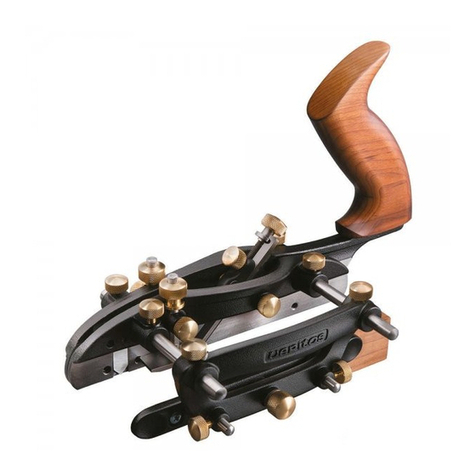Care and Maintenance
The body of this plane is ductile cast iron and comes treated with rust preventative.
Remove this using a rag dampened with mineral spirits. Clean all machined surfaces.
We recommend that you initially, then periodically, apply a light coat of paste wax
to seal out moisture and prevent rusting; this also has the added bonus of acting
as a lubricant for smoother planing. Wipe off any wood dust from the surfaces
that you will be waxing, apply a light wax coating, let dry, then buff with a clean
soft cloth. At the same time, the solvents in the wax will remove any harmful oils
left from your fingers that can lead to corrosion. This is especially important with
planes that are gripped on the machined surfaces.
Keep in mind that paste wax contains silicone that, if transferred to your workpiece,
could cause finishing problems such as "fish eyes". To avoid this problem, use
silicone-free products, such as Waxilit®sliding agent and glue release, or a tool
surface sealant. Either is an excellent alternative to regular paste wax. However,
before treating a plane with a sealant, wipe off any fingerprints with a cloth
dampened with a small amount of light machine oil. Remove any residual oil;
then apply the sealant to the plane’s sole.
If storage conditions are damp or humid, the plane should, in addition to the
treatment outlined above, be wrapped in a cloth or stored in a plane sack. This
precaution will also guard against dings and scratches.
Every so often, clean all parts with a cloth dampened with a dab of light machine
oil and lubricate where necessary. For corroded plane bodies, we recommend you
first remove the rust with a fine rust eraser, then treat as described above.
The bright finish on the brass components can be maintained as above. If a patina
finish is preferred, simply leave the brass components unprotected until the desired
level of oxidation has occurred, then apply a sealant. If you want to make them
bright and shiny again, you can revitalize the surface with a brass polish.
6
